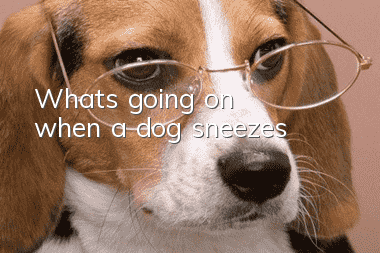How to choose a Samoyed puppy?

The Samoyed is named after the Samoyeds, a Siberian herdsmen, and has always been used to pull sleds and guard reindeer. Samoyeds are known for their endurance and strong physique. European explorers used this dog for expeditions to the Arctic and Antarctic. This dog has many coat colors, usually black, black and white, black and tawny, and ultimately the white coated variety is dominant.
Appearance: A very thick coat. Male dogs have collar-like hair, but female dogs do not. The Samoyed's back should not be too long, because too long may cause the back to be weak and unable to do the job. But at the same time, the body should not be too compact, because this will not be effective in pulling the car. Male dogs are masculine in appearance and behavior, but are not allowed to engage in aggressive behavior without permission. The female dog has a gentle temperament, but her body should not be weak. The back of a female dog can be slightly longer than that of a male dog. The limbs should be relatively long. Samoyeds with short limbs do not conform to the standard. The hindquarters should be particularly well developed and the stifles should be well angulated in four corners. Any weak or cow-like stifles are a serious fault.
Body structure: The bones and muscles are well developed, and the bones are heavier than other dogs of the same height, but they should not be too heavy, otherwise it will hinder speed and flexibility, and these two items are the least important for Samoyeds. Bones should be proportional to body size. The weight cannot be too heavy, otherwise it will appear bulky, but it cannot be too light either, and should be proportional to the height.
Height: Double layer of back hair. The lower layer is short, soft like wool, and covers the whole body. The upper coat is thicker and longer, growing vertically along the body but not curly. The coat on the neck and shoulders is collar-like. The coat of female dogs is slightly shorter and softer than that of male dogs.
Color: Must be pure white, white plus light yellow, cream or light yellow. Others are inconsistent with the standard.
Butai: Walking speed is fast and the pace is brisk. The forequarters have good reach and the hindquarters have strong drive.
Hindquarters: The thighs are well developed, and the knee joint is at an angle of approximately 45 degrees to the ground. Viewed from the back, when the dog stands naturally, both hindlimbs are parallel. Straight or cow-like knee joints do not meet the criteria.
Forequarters: Both forelimbs are parallel and straight. The front feet are strong. Because the chest is relatively deep, the forelimbs are relatively long. The height from the ground to the elbow is approximately 55% of the height from the ground to the upper edge of the shoulder blade. Those with limbs that are too short do not meet the standard. The shoulders should be long, sloping at an angle of about 45 degrees, and strong. The distance between the upper edges of the two shoulder blades is about 2.5~3.8 cm.
Feet: Large, long, relatively flat, like a hare's feet, with slightly separated toes; arched toe tips, thick and hard pads, and protective hair between the toes. Feet that are spread out, pigeon-like toes, rounded or cat-like feet, and toes that are too far apart are all faults.
Head: Composition - The skull is broad and slightly arched at the top, but not rounded. The line connecting the base of the eyes and the center point between the eyebrow arches forms an equilateral triangle. Muzzle--Medium length and width, tapering from the base to the tip. The muzzle is proportional to the body shape and skull size. The muzzle must have a certain thickness. The beard cannot be cut off. lips— Black is preferred, with the corners of the mouth turned up as if smiling. The lips at the corners of the mouth should not droop. Ears---thick, upright, triangular in shape, slightly rounded at the tip; ears should not be too large, but not too small either. Ear size should be proportional to the dog's height and head size. The ears are set widely apart, but the heel is within the edge of the head. The ears are mobile and have hair inside them, and the hairs in front of the ears are numerous and upright. The length of the ear is equal to the distance from the inner base of the ear to the outer corner of the eye. Eyes--Dark color is best. The eyes are sunken, widely spaced, almond-shaped, and the lower eyelids are tilted toward the base of the ears. Darker edges of the eyes are preferred. Round eyes, blue eyes, and eyes that are too protruding do not meet the standards. Nose---Black preferred, but brown, liver-brown noses are also acceptable. Teeth--Strong, scissor bite. The upper and lower forehead should not be too prominent.
Expression: Whether you have a smiling expression is very important. When on alert, the ears are pricked up.
Trunk: Neck - strong, muscular, with a graceful arch.
Chest: Deep, with well-spread ribs allowing free movement of the forelegs and shoulders.
Lower back: The withers are the highest point of the shoulders. The loin is strong and slightly arched. The back is straight, length of stroke, and well muscled. The body is approximately square, with length approximately 5% longer than height. Female dogs are slightly longer than male dogs. The abdomen should be drawn upward. The buttocks are plump, slightly sloping, and connect naturally to the tail.
Tail: relatively long, reaching the elbow joint when hanging naturally. The tail coat is long and thick. When the dog is on alert, the tail is raised higher than the back or to one side, and droops when resting. The root of the tail should not be too high or too low, and the tail should be flexible. Two curled tails are a fault. The tail is raised higher than the back only once during competition.
Disqualification conditions: Colors other than white, light yellow, cream: blue eyes. The selection of puppies depends on characteristics. For pedigree issues, you can only look at the pedigree certificate.
- What should I do if my dog is deficient in calcium? What are the tips for pet parents to supplement calcium for their dogs?
- How to train a German Longhaired Pointer
- Why do dogs and cats develop kidney failure? Can it be treated well?
- Puppies have runny noses, dogs have yellow runny noses
- Chihuahua file introduction and breeding knowledge
- Does golden retriever blood in stool have to be small?
- What are some dogs with good personalities?
- Punish your dog’s mistakes appropriately
- What’s the most effective and best thing to do when your dog has a fever?
- 9 Tips for Buying a Purebred Bichon Frize



